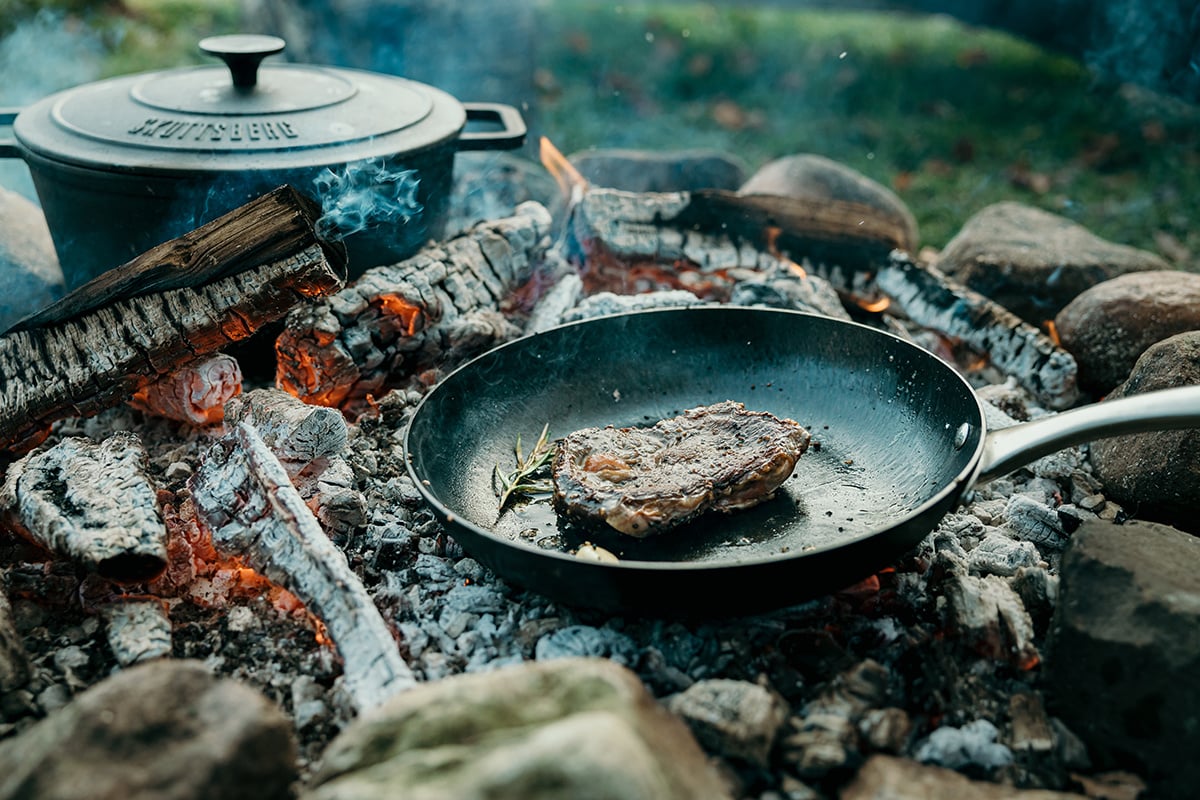Ever stood in your kitchen, shaping up for a culinary adventure, and suddenly notice your pan is wobbling on the worktop? Although a rare occurrence, it can happen to even the best pans if you're not careful. So let's talk about your shaky cooking friend: the warped pan. It's natural to wonder where you went wrong. Could this have been avoided? You can read all about it in our blog.
Although rare, even experienced chefs are sometimes faced with a warped pan. You take it out of the cupboard and there it is, wobbling on the hob like it had a little too much sauce last night. Been there? Then now's the time to sit up and listen!
- Using your pan on different heat sources
People often make the classic mistake of switching from one heat source to another without thinking first. A typical example is switching from gas to induction hob, not realizing that you can't use your old pans any more. This is not so much the case nowadays. Yet there is some truth to it: pans can expand and become rounded when used on a gas flame. When a pan warps like this, it no longer makes good contact with the flat surface on an induction hob. - Cooking at full heat
Cooking on the highest setting might make you feel you're doing an amazing job in the kitchen. Be careful, however, because your pan can warp sooner than you might expect. If you cook with a pan at maximum heat, the material itself might not be able to keep up with the rapid increase in temperature and could deform. The centre of the pan heats up faster than the edges, causing the pan to warp. - Washing up too soon
Washing up too soon after using your pan is like jumping straight from a hot sauna into an icy pool — your body doesn't like it, and neither does your pan. That abrupt change in temperature causes what we in cooking call thermal shock. So it's a good idea to let your pan settle down and cool off a little first before giving it a good clean.
You're stood there in the kitchen casually chopping garlic, ready to warm your pan, and suddenly you notice something: your pan is wobbling like a drunken sailor. In other words, the pan is warped. What made you notice that? When you pour water in and it runs out to the sides quicker than you drive home after a busy day. Or perhaps you notice omelettes always slide towards one side of the pan as if fleeing the pepper? These are the obvious signs of a warped pan.

Nobody wants a warped pan. So protect your pan from warping by following this practical advice:
Tip 1
Steer clear of that ice-cold tap and put your pan down on a trivet or cool hob to cool down gradually after using.
Tip 2
Avoid turning the heat on your hob straight to the highest setting. Start on a low heat and turn it up gradually.
Tip 3
Ensure the heat is distributed evenly across the whole base of your pan.
Cooking with a warped pan does not usually cause any major headaches. So you don't have to chuck a pan away just because it's slightly warped. Are you having any problems, perhaps when cooking on an induction hob? Then there are ways to straighten out your pan a little, or adjust how sensitive your hob is. If none of these solutions helps, you may just have to accept your pan has seen its better days.

















